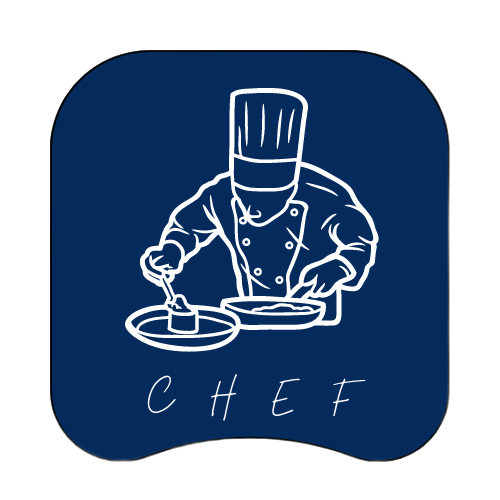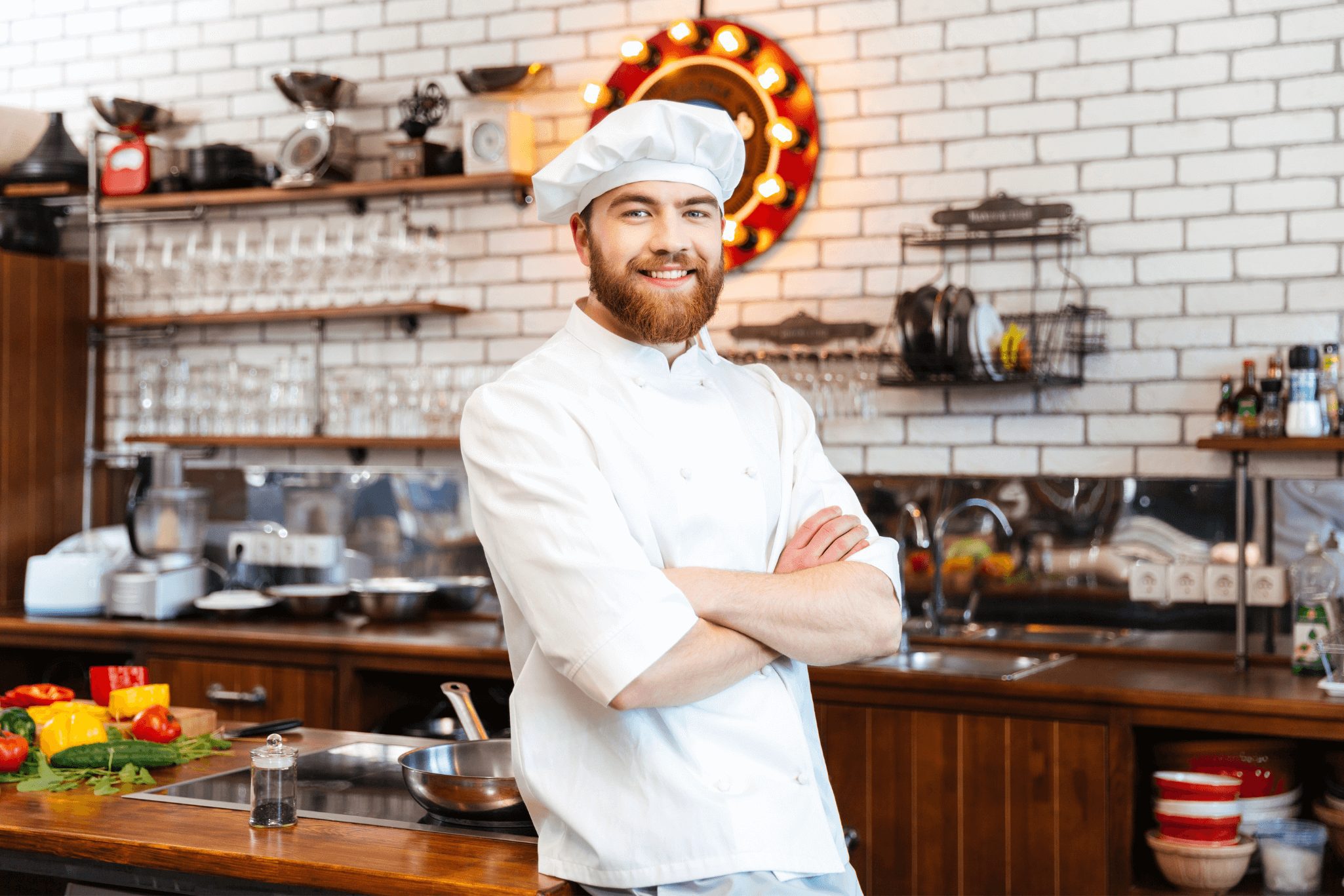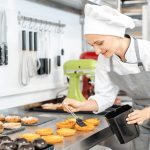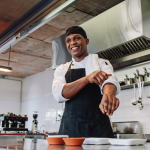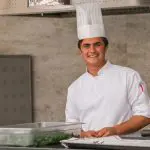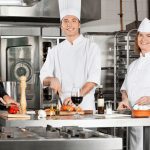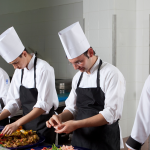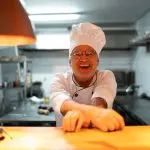A teaspoon is the smaller measurement of the two.
Here’s a simple guide you can follow:
Tsp to Tbsp
- 3 tsp = 1 tbsp
- 1 ½ tsp = ½ tbsp
You can use this guide to work out any other measurement you may need. For example, if you only have a ½ tsp measurement to hand, and need 1 tbsp for your recipe, you can work out that you need 3 tsp for 1 tbsp and so you’ll need six ½ tsp measurements to equal one tablespoon.
To figure out how many teaspoons you need, multiply the number of tablespoons you need by 3 (i.e. 1 tbsp x 3 = 3 tsp). If you need to figure out how many tablespoons you need from a tsp measurement, divide by 3 (i.e. 9 tsp / 3 = 3 tbsp).
How Many Teaspoons in a Tablespoon?
Open any recipe book or blog and you’ll find almost every recipe calls for teaspoons (tsp), tablespoons (tbsp), or both. While some recipes measure other ingredients in cups or grams, teaspoons and tablespoons are universal.
Want To Skip Ahead?
- How Many Teaspoons In A Tablespoon
- Dry Vs Wet Ingredients
- Are American tsp and tbsp different from the UK tsp and tbsp
- How many tablespoons in a cup?
- Tsp v tbsp: Is the difference important?
- I added a tablespoon instead of a teaspoon, should I start over?
- Is a dessert spoon a teaspoon or a tablespoon?
- What is a “heaped” teaspoon or tablespoon?
But, there’s certainly a big difference between the two! Add a tablespoon of salt to something that called for a teaspoon and you’ll undoubtedly taste the difference.
In baking, mixing up these two measurements can spell disaster, so it’s important to know the difference.
(tsp to tbsp Explained)
If you’re ready to start cooking and realise you’ve only got a teaspoon or tablespoon measurement to hand, then you need to know how many teaspoons go into a tablespoon.
How many teaspoons in a tablespoon? Dry vs Wet Ingredients
The good news is there’s no difference between a “dry” teaspoon and a “wet” teaspoon, it’s the same measurement. If you want to know how many grams or ml your measurement is, see the guide below:
- 1 tsp = 5ml
- 1 tsp = 5g
- 1 tbsp = 15ml
- 1 tbsp = 15g
Provided you’re measuring a liquid or powder, you can follow this guide exactly. If you’re measuring anything else, you may find that the exact measurements differ, because tablespoons and teaspoons (like cups) measure volume, not weight.
Are American tsp and tbsp different from the UK tsp and tbsp?
Technically yes, but the difference is so minute that you won’t see any difference in most recipes.
For example, one US teaspoon holds 4.93ml of liquid, while a UK teaspoon holds 5ml.
Note: Australia is an exception because instead of their tablespoons being 15ml like in the UK, they are 20ml.
So, if you’re in Australia, note that your tablespoon measurements will be about 5ml more than the US and UK measurements.
How many tablespoons in a cup?
Cup measurements are becoming more commonplace here in the UK, but working with an American recipe can be a little complicated if you don’t have cup measurements.
Cup measurements don’t translate directly into grams, so you have to look up each item you’re measuring to find out how much you need.
For example, a cup of flour does not weigh the same as a cup of broccoli.
Fortunately, for baking or working with liquids or powders, you can simply work in tablespoons instead if you don’t want to Google each item.
One cup equals 16 tablespoons (or 48 teaspoons!) so while it may be a little tedious to measure, you can get straight to work without looking for the right conversion online.
Tsp v tbsp: Is the difference important?
Yes – in some recipes, it can be the difference between a delicious result and an inedible one! In baking, it may mean it doesn’t rise or rises too much.
While you may think nothing more than “this is sweet” if you add a tablespoon of sugar instead of a teaspoon to your stir fry. Adding a tablespoon of salt instead of a teaspoon to your cookies will make them practically inedible.
If a recipe calls for salt or something salty like dark soy sauce, don’t be afraid to start with a smaller measurement and build up to taste.
Similarly, if the recipe calls for hot sauce or chilli powder and you’re not a huge fan of hot food, start small and build up, mixing well before re-tasting.
As a general rule, you should follow baking recipes exactly, but you can modify cooking recipes to your personal preferences.
It’s also easy to substitute ingredients while cooking, but less so while baking.
I added a tablespoon instead of a teaspoon, should I start over?
The answer is it depends. If you added a tablespoon of baking powder to your cake mixture but have yet to mix it in, you may be able to scoop the majority of it out and add a new measurement back in.
If you’ve mixed it in, then yes, you’ll likely need to start over.
Remember that baking is chemistry while cooking is more of an art, so getting anything drastically wrong while baking is a much bigger deal.
In cooking, you’re only going to make a big mistake if you add too much of something with a strong taste, such as salt, extra hot chilli powder, Chinese five spice, or cinnamon.
If you’re cooking and add a tablespoon instead of a teaspoon, taste the mixture and decide whether you can salvage the recipe based on the taste.
Is a dessert spoon a teaspoon or a tablespoon?
It’s neither, unfortunately! For a dessert, just use 2 teaspoons. 1 dessert spoon is equal to 2 teaspoons, so 10ml or 10g.
What is a “heaped” teaspoon or tablespoon?
A “heaped” tablespoon isn’t a measurement you’ll see in American recipes but is common in British and Australian recipes.
A heaped teaspoon or tablespoon simply means a generous teaspoon, so instead of being completely flat, it can be a little heaped.
It’s likely you don’t measure that precisely for cooking anyway, since it’s really only necessary in baking. Therefore, you may already be using a heaped teaspoon or tablespoon.
Essentially, you can think of this measurement as giving you some wiggle room to adjust to taste.
If you want to be precise, add ⅛ or ¼ of the measurement in addition to a precise measurement.
Now you know how many teaspoons are in a tablespoon, you can go into your kitchen endeavours with confidence.
If you keep the advice in this article in mind, your creations will be delicious and with just a little practice. And you’ll be able to start creating your own cooking recipes.
